women at war.
Katanning’s daughters at war…
Women in Action
Nurses and Serving Women
Women at Home
Click a link below for more information
Or scroll down page
More than 3,000 Australian civilian nurses volunteered for active service during the First World War. While enabling direct participation in the war effort, nursing also provided opportunities for independence and travel, sometimes with the hope of being closer to loved ones serving overseas.
The Australian Army Nursing Service (AANS) had been formed in July 1903 as part of the Australian Army Medical Corps. During the war more than 2,000 of its members served overseas alongside Australian nurses working with other organisations, such as the Queen Alexandra’s Imperial Military Nursing Service Aus. (QAIMNS) [2], the Red Cross, or privately sponsored facilities.
Continue reading
.
WOMEN AND WORLD WAR ONE
During World War One, women served at home and abroad. The war provided an opportunity for some women to travel and serve overseas. Over 3 000 Australian women enlisted in World War One and served as nurses who cared for the wounded, wrote to patients’ families, and in some cases, were given added responsibilities and opportunities to be trained in other areas of medical care such as anesthetics.
Continue reading
.
AUSTRALIAN WOMEN IN WORLD WAR ONE
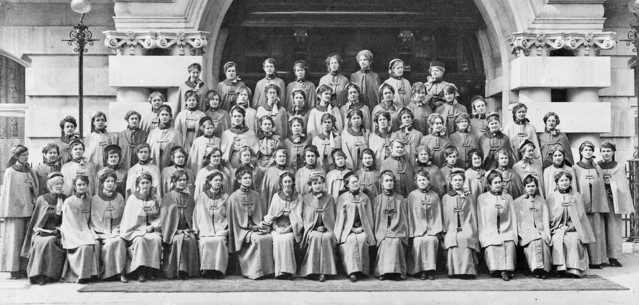
Group portrait of members of the Australian Army Nursing Service (AANS) most of whom embarked from Australia on the Orsova during July 1915, outside the Ivanhoe Hotel in London. Identified from left to right, back row: Sisters Inez Clare Cronin; McKinnon; Catherine Christina McSpedden; Alice Tryphens le Mesurier (Messurier); Hannah Coonan; Victoria Dorothy Christenson; Annie McHardy; Toan. Fourth row: Sisters Wildash; Wearne (probably Dorothy Wearne); Kathleen Byrne; Florence Laura Lewis; Catherine McGillivray; Elizabeth Grover; Emily Cornelia Parish; Amelia Uren; Catherine Temby Uren; Kathleen L Walker; I Walker. Third row: Sisters Kennedy; Florence Vines; Neta Burns; Pearl Lottie Trayhurn (later Mrs Harry Jackson); Dorothea Mary Agnes Burkitt; Grace Lacy Love; Neta May Smallwood; Bartlett; Fanny Isabella Hammersley; Leitch; Violet Grace Jenkins; Marchant; Ivy Norma Kathleen Ritchie; Laura May Begley; Catherine Louie Harden; Alice Bull; Edith Jones. Second row: Sisters Ryan; Ethel Buchanan; Moffat; Elanor Edith Moore; Rachael Clouston; Collins; Ina Mary Were; Mary Ellen Fisher; Mary Morton McAnene; Matthers; Taylor (probably Ruth Stewart Taylor); Lillian May Clarke; Catrina Dawson; Beatrix Myra Thompson; Helen Kidder Gilham; Odgers; Ellen Mary Ellis; Violet Irene Clarke; Elsie Dora Smith; Annie Florence Roberts; Daisy Valerie Corkhill. Front row: Sisters Adeline Beatrice Gertrude Priestley; Laura Mary Lyne (Lyme); Ruth Stewart Taylor; Catherine Munro; Helena Caroline Symons (Symonds); Mary Eveline Nicholson; Gertrude Francis Moberley; Humphries; Matron Ethel M Strickland; Matron Alice Mary Cooper; Sisters Florence Mary Mulholland; Maggie Jones; Ida Marie Axelsen (Axelson); Alice Jane Camac (Carnac); Kitson; Winnifred Jane Smith.
.
.
GROVER, Elizabeth Bridget
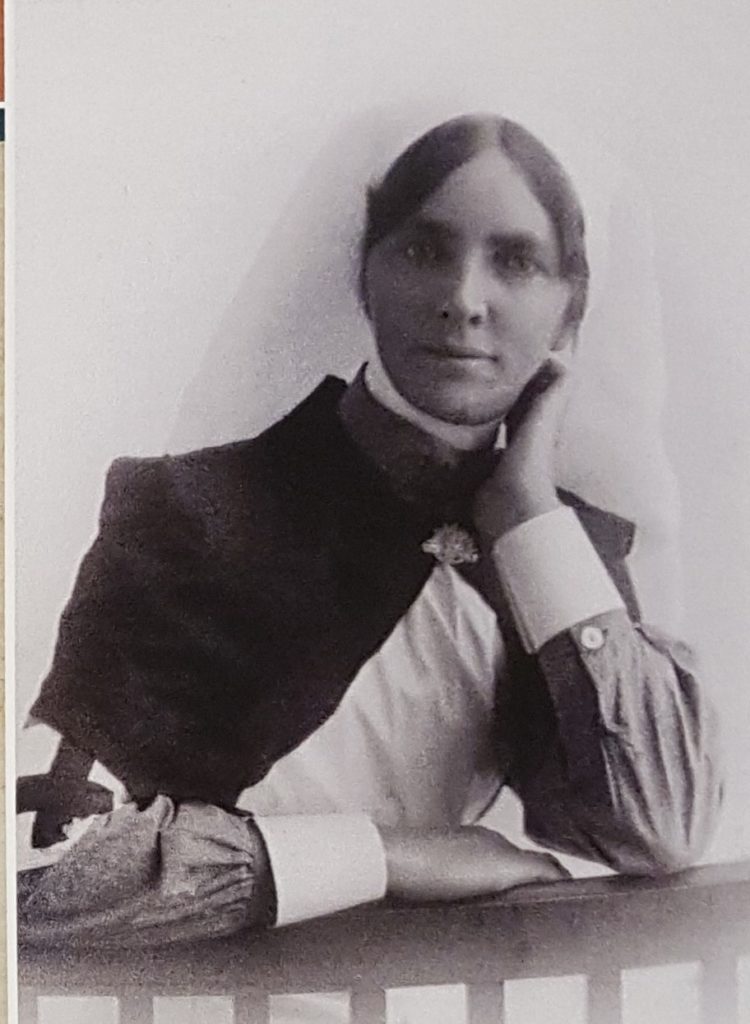
Nurse Elizabeth Grover
Elizabeth Bridget Grover was born on 9 July, 1875 in Kojonup to William and Bridget Mary (nee Noonan) Grover. She was the couples sixth child – one of eleven children – four boys and seven girls.
Elizabeth GROVER
Place of birth: Indinup, Kojonup, Western Australia
Religion: Roman Catholic
Occupation: Nurse
Address: Katanning, Western Australia
Marital status: Single
Age at embarkation: 40
Next of kin: Mother, Mrs B M Grover, ‘Indinup’, Kojonup Road, Katanning, Western Australia
Enlistment date: 12 June 1915
Rank on enlistment: Staff Nurse
Unit name: Convalescent Depot, Harefield Park, London
AWM Embarkation Roll number: 26/84/1
Embarkation details:
Unit embarked from Fremantle, Western Australia, on board HMAT A67 Orsova on 22 July 1915
Rank from Nominal Roll: T/Sister
Unit from Nominal Roll: Australian Army Nursing Service
Fate: Returned to Australia 6 February 1919
Read her story here
.
.
COOK, Florence Beatrice
Florence Cook [2] was the daughter of John and Ann Cook. John was train driver on the Great Southern Railway and a hotelier in Katanning from 1895. She married Albert McLeod (son of George McLeod, a Katanning hotelier) on 3 March 1916 at the Abbassia Chapple in Cairo, Egypt.
Florence worked at the Base Hospital in Fremantle before embarking at Fremantle for Egypt. In Egypt she was attached to the 1st AGH at No. 4 Auxiliary Hospital.
On her return to Western Australia, Florence worked at several hospitals throughout the state. She was temporary Matron at the Katanning Hospital from 1938 before being made permanent from May, 1940 to January, 1942. She died in South Australia on 28 May, 1986, aged 95.
Read her story here
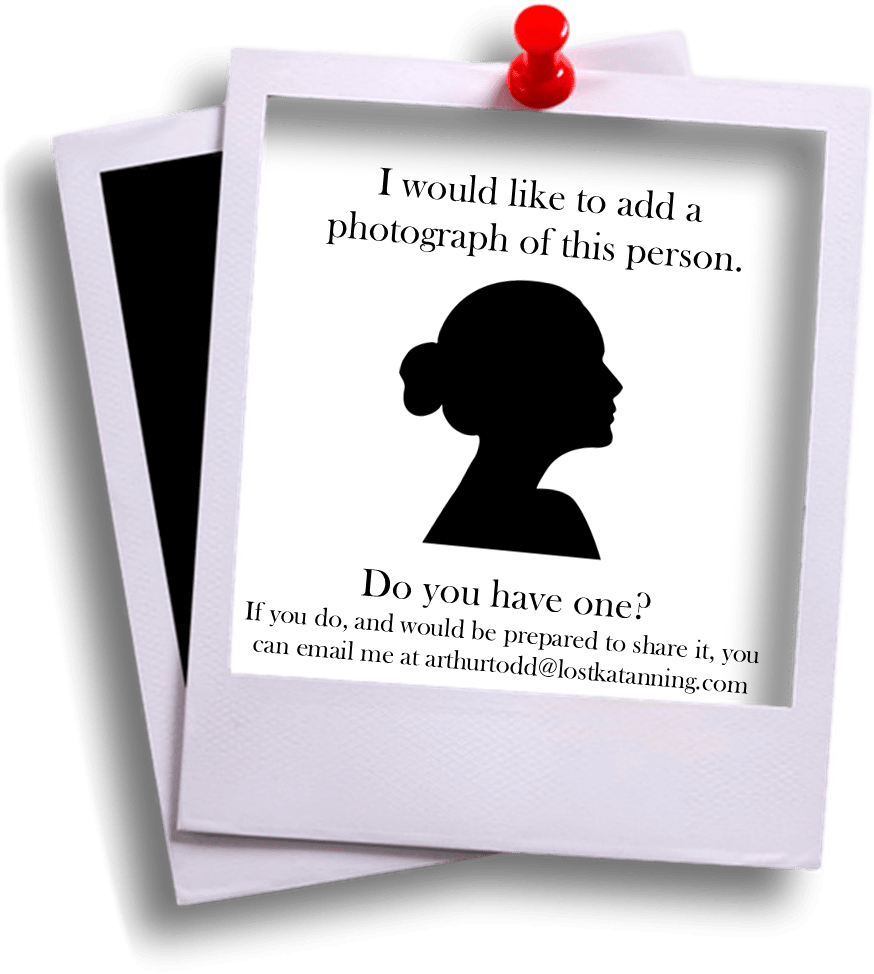
.
WOMEN AND WORLD WAR TWO
Nurses had gone overseas with the AIF in 1940. However, during the early years of the war women were generally unable to make a significant contribution to the war effort in any official capacity. Labour shortages forced the government to allow women to take a more active role in war work and, in February 1941, the RAAF received cabinet approval to establish the Women’s Auxiliary Australian Air Force [2] (WAAAF). At the same time, the navy also began employing female telegraphists, a breakthrough that eventually led to the establishment of the Women’s Royal Australian Naval Service (WRANS) in 1942. The Australian Women’s Army Service (AWAS) was established in October 1941, with the aim of releasing men from certain military duties in base units in Australia for assignment with fighting units overseas. Outside the armed services, the Women’s Land Army (WLA) was established to encourage women to work in rural industries. Other women in urban areas took up employment in industries, such as munitions production.
.
KATANNING WOMEN’S
NOMINAL ROLL – WW11
Click on a name below to read their war record:
ANTONIO, MARY MONICA
BAHLINGER, MAVIS ROSE
BARKLEY, FLORENCE IVY
BARROT, JEAN
BREMNER, SHIRLEY CLARE
BUNNEY, RAYE LILLIAN
CRONIN, UNA ELLEN
GARMAN, MARGARET HILDA
HANNA, VALMA ALICE
HARRIS, KATHLEEN GRACE
HENCHIE, JOYCE
JURY, MERLE CAMPBELL
JURY, RONDA FLORENCE
LADYMAN, AUDREY
LAWRANCE, MARY
MORRELL, JESSICA ENID
PATTERSON, HOLLY JOYCE
PEMBER, CLAIRE
PUMPHREY, ELLA BERTHA
SAXBY, AILEENE JOYCE
SCOTT, MARY
STANFORD, MARY ELIZABETH
STANFORD, NORA DORIS
THOMSON, LILLIAS KENDALL
TURNBULL, LINDA
For centuries women have been involved in every kind of war and conflict imaginable, especially as nurses. Australian nurses have dealt face-to-face with war – the sick, the wounded and the dead. They have served in Australia, in war zones across the world and on hospital ships and transports.
More recent conflicts have seen the gender based boundaries traditionally seen in wartime blur. These days, there are few jobs within Australia’s armed services that are not open to women. Female soldiers, sailors and airwomen are now commonplace.
And while women still fulfill traditional roles of administrators and nurses, it is not unusual to see male nurses and female doctors working together on military missions, such as when the Australian military provided support to victims of the December 2004 tsunami in Indonesia. Read more
.
AUSTRALIAN WOMEN’S LAND ARMY
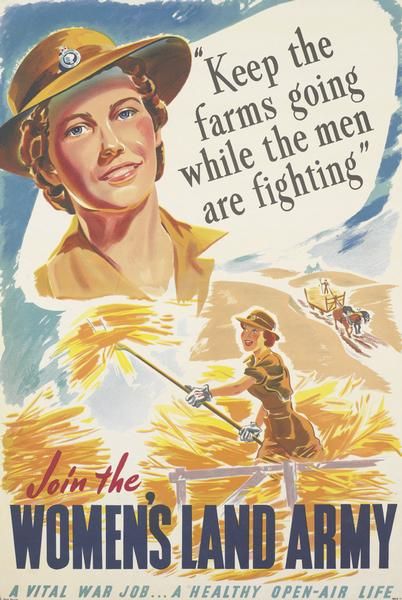
The involvement of Australian women in each war is closely connected to their role in society at different times, and the nature of each war.
Australia has been involved in a number of wars including:
The Boer War (1899–1902),
World War I (1914–1918),
World War II (1939–1945),
The Korean War (1950–1953),
The Vietnam War (1962–1972) and
The Gulf War (1990–1991).
On the home front our women dealt with the consequences of each of those wars – managing children and family responsibilities alone, shortages of resources, as well as their fears for the future, and the grief and trauma of losing loved ones.
Many women were also actively involved as nurses and in other active service duties, and contributed more actively to war efforts through military service. Other Australian women were also closely connected with war through male relatives and friends away on military service.
In World War II, women were actively recruited into jobs that had always been the preserve of men; they worked in factories and shipyards, as members of the Women’s Land Army and as Official War Artists.
Read More
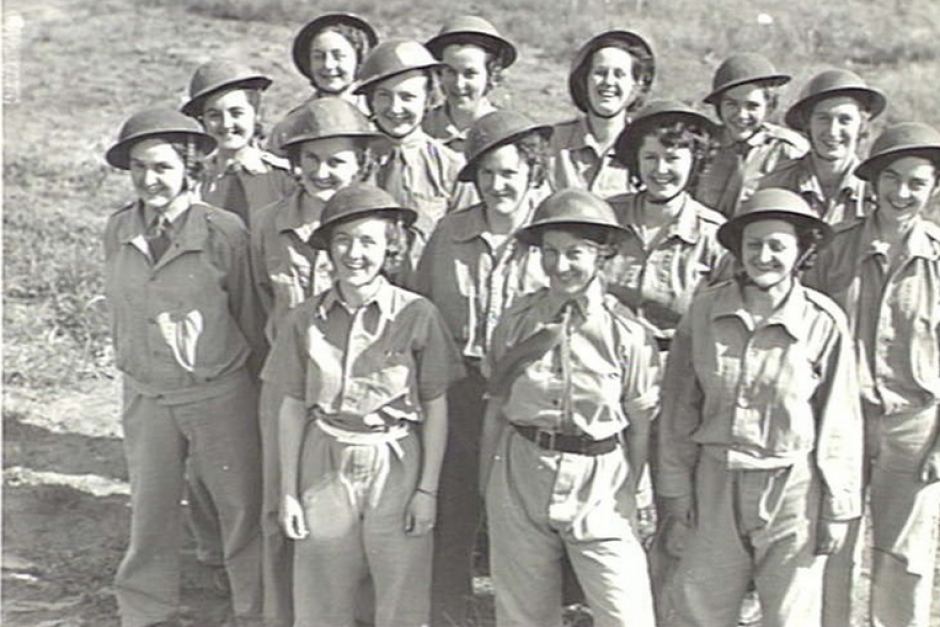
Members of Australia’s Land Army
Establishment of the
Australian Women’s Land Army
On 27 July 1942, the Australian Women’s Land Army (AWLA) was established as a national organisation, reporting to the Director-General of Manpower, John Dedman. The aim of the AWLA was to replace the male farm workers who had either enlisted in the armed services or were working in other essential war work such as munitions.
The AWLA was not an enlisted service, but rather a voluntary group whose members were paid by the farmer, rather than the government or military forces. Membership of the AWLA was open to women who were British subjects and between the ages of 18 and 50 years. Housed in hostels in farming areas, members were given formal farming instruction and were initially supplied with uniform, bedding etc.
Members were not engaged in domestic work; rather they undertook most types of work involved with primary industries. The organisation was to be formally constituted under the National Security Regulations, but a final draft of the National Security (Australian Women’s Land Army) Regulations was not completed until 1945 and did not reach the stage of promulgation due to cessation of hostilities and the decision to demobilise the Land Army.
A ‘Land Army’ was established in each state and administered that state’s rural needs, though some members were sent interstate when available. In September 1945 it was decided that complete demobilisation of the Australian Women’s Land Army would take effect not later than 31 December 1945.
Read more
IS ANYONE MISSING?
Do you know of any women who should be listed on this page but is missing from it?
If you do, please email her name and information to
admin@lostkatanning.au
Women at War
women at war. women at war. women at war. women at war. women at war. women at war. women at war. women at war. women at war. women at war. women at war. women at war. women at war. women at war.
